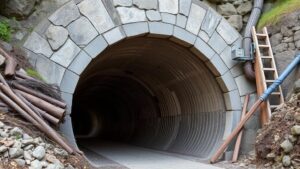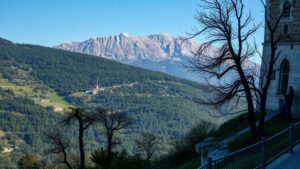Searching for unexcavated Aztec ceremonial centers in the mountains of Oaxaca.
Searching for Unexcavated Aztec Ceremonial Centers in the Mountains of Oaxaca
In the lush mountains of Oaxaca, Mexico, a new frontier of archaeological discovery is unfolding. Researchers are on a quest to uncover unexcavated Aztec ceremonial centers that remain buried beneath thick foliage and rocky terrain. This exploration is not just a search for ancient structures; it is a deeper investigation into the cultural and spiritual lives of the Aztec civilization, one of the most significant in pre-Columbian America.
The Historical Context of the Aztec Civilization
The Aztec civilization thrived in Mesoamerica from the 14th to the early 16th century, with its capital city, Tenochtitlán, located where modern-day Mexico City stands. Recognized for its impressive architectural achievements and profound religious practices, the Aztec culture was rich in ceremonial sites, many of which have yet to be fully explored. Archaeologists believe that the mountains of Oaxaca might host a wealth of undiscovered ceremonial centers used for rituals, worship, and community gatherings.
According to recent studies, the Aztecs constructed thousands of ceremonial centers across their empire, with a significant focus on nature and celestial alignment in their architecture. This raises an intriguing prospect: could the mountainous regions of Oaxaca hold the key to understanding their cultural practices?
Current Archaeological Techniques
To locate these unexcavated sites, researchers employ a variety of modern archaeological techniques that include:
- LiDAR Technology: This advanced laser scanning technology allows archaeologists to map and visualize the terrain, detecting structures hidden beneath dense vegetation.
- Ground Penetrating Radar (GPR): GPR is utilized to survey below the surface, providing a picture of the subsurface structures without the need for excavation.
- Drone Surveys: Drones equipped with high-definition cameras perform aerial surveys, capturing images that reveal potential sites for further investigation.
Notable Findings and Examples
Recent expeditions in the Oaxaca region have yielded significant findings. For example, in 2019, a team discovered remnants of a ceremonial platform in the Sierra Norte mountains. The discovery, along with pottery shards and tools, suggests that this site was used for ritual activities. Such findings underscore the possibility that numerous other sites lie hidden, waiting to be unearthed.
Also, locations like Monte Albán and Mitla, which are more well-known and excavated, have set the precedent for what researchers might expect to find elsewhere in the region. e sites illustrate the advanced architectural skills and profound spiritual life of the Aztecs, offering clues to the unstudied areas nearby.
Significance of Unexcavated Sites
The search for unexcavated ceremonial centers is not only about archaeological discovery; it plays a crucial role in understanding the social and religious structures of the Aztecs. Each site can provide insights into:
- Cultural Practices: Rituals and ceremonies that defined Aztec life.
- Social Organization: How communities interacted and organized themselves around religious practices.
- Artistic Expression: Evidence of artwork and craftsmanship that reflects the Aztec worldview.
Understanding these components can help modern society appreciate the complexities of ancient civilizations and their enduring influence on contemporary culture.
Anticipated Challenges
While the search for unexcavated sites is promising, it is fraught with challenges. The remote and rugged terrain of the mountains, combined with dense vegetation, complicates access and survey efforts. Also, potential funding shortages and environmental concerns may hinder research progress. There is also the delicate balance of preserving indigenous archaeological sites while conducting investigations.
Conclusion: The Path Forward
As archaeologists continue to search the mountains of Oaxaca for unexcavated Aztec ceremonial centers, they are not merely seeking artifacts; they are striving to reconnect with the past and gain deeper insights into an extraordinary civilization. Emphasizing the integration of modern technology and traditional methods of study, the field is at the forefront of a new era of archaeology. Successful discoveries will not only shed light on Aztec history but also enrich our understanding of human culture and its evolution.
For aspiring archaeologists or anyone interested in Mesoamerican history, this ongoing journey offers an exciting opportunity to witness history being written anew. It is a reminder that, much like the mountains of Oaxaca, much of our heritage remains uncharted, waiting patiently to be discovered.



